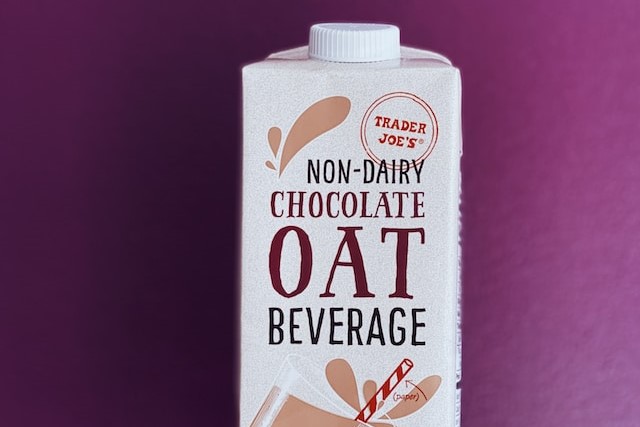Before we dive deep into the SWOT analysis, let us get the business overview of Trader Joe’s. Trader Joe’s is a popular American chain of specialty grocery stores known for its eclectic product mix, affordable prices, and distinctive shopping experience.
Founded in 1958 by Joe Coulombe, the company began as a small chain of convenience stores called Pronto Markets. In 1967, it rebranded to Trader Joe’s, with the first store opened in Pasadena, California. The company’s ownership changed in 1979 when German retail group Aldi Nord acquired it.
As of 2021, Trader Joe’s operates over 500 stores across the United States, with the majority concentrated in California. The company’s expansion strategy is focused on opening new stores in metropolitan areas and suburban communities with a high density of college-educated consumers who appreciate gourmet, organic, and unique food items.
Trader Joe’s differentiates itself from other grocery stores through its private-label products, which comprise approximately 80% of its offerings. The company’s product selection emphasizes high-quality, healthy, and innovative items, often sourced from boutique suppliers worldwide. Some of the most popular products include the “Two Buck Chuck” wine, Speculoos Cookie Butter, and Cauliflower Gnocchi.
Trader Joe’s is well-regarded for its customer service and in-store experience. The stores have a relaxed, nautical theme, reflecting the founder’s inspiration from the Caribbean. Employees, known as “Crew Members,” are encouraged to interact with customers, offering recommendations and answering questions. The company is also committed to fair wages and employee benefits, contributing to low turnover and high employee satisfaction.
Trader Joe’s marketing strategy relies heavily on word-of-mouth, with minimal traditional advertising. The company engages with customers through its print publication, the Fearless Flyer, and its website, which features product descriptions, recipes, and store information. Social media has also played a significant role in amplifying the brand’s popularity and fostering a dedicated community of fans.
Trader Joe’s Business Model of “Less is More”
Here is a SWOT analysis for Trader Joe’s:
A SWOT analysis is a strategic planning tool used to evaluate the Strengths, Weaknesses, Opportunities, and Threats of a business, project, or individual. It involves identifying the internal and external factors that can affect a venture’s success or failure and analyzing them to develop a strategic plan. In this article, we do a SWOT Analysis of Trader Joe’s.
SWOT Analysis: Meaning, Importance, and Examples
Strengths
- Unique product offerings: Trader Joe’s private label products make up approximately 80% of its inventory, allowing the company to offer unique, high-quality, and innovative items that are difficult to find elsewhere. This distinctive product mix is key to customer loyalty and repeat business.
- Competitive pricing: Despite its focus on quality and uniqueness, Trader Joe’s maintains affordable product prices. This is achieved through direct sourcing from suppliers, cutting out middlemen, and simplifying packaging. The combination of competitive pricing and quality products attracts a wide range of customers.
- Strong brand identity and customer loyalty: Trader Joe’s has cultivated a dedicated following of customers who appreciate its distinctive shopping experience, eclectic product mix, and friendly customer service. The company’s focus on word-of-mouth marketing has created a strong and authentic brand identity that resonates with its customer base.
- Excellent customer service: The company is known for its attentive and knowledgeable employees, or “Crew Members,” who are encouraged to engage with customers and provide personalized recommendations. This approach to customer service fosters a positive shopping experience and contributes to customer loyalty.
- Employee satisfaction: Trader Joe’s is committed to offering fair wages and benefits to its employees, resulting in low turnover and high employee satisfaction. Happy employees are more likely to provide excellent customer service, further enhancing the overall shopping experience.
- Selective store locations: Trader Joe’s carefully chooses its store locations in metropolitan areas and suburban communities with a high density of college-educated consumers. This targeted expansion strategy allows the company to tap into a demographic that appreciates its unique product offerings and shopping experience.
- Environmental and social responsibility: Trader Joe’s is committed to sustainability and social responsibility by offering a range of organic and eco-friendly products, minimizing packaging waste, and supporting local communities through donations and partnerships.
Weaknesses
- Limited store presence: While Trader Joe’s operates over 500 stores in the United States, its store count is relatively low compared to other major grocery chains. This limited presence can restrict the company’s reach and make it difficult for some customers to access its stores.
- Narrow product assortment: Trader Joe’s focuses on offering a curated selection of unique, high-quality products, which can lead to a narrower product assortment compared to traditional grocery stores. This may not suit customers who prefer a one-stop-shop experience and may choose to shop elsewhere for a wider variety of products.
- Slow online adoption: Trader Joe’s has been slow to adopt e-commerce and online shopping options, focusing primarily on its brick-and-mortar stores. As a result, the company may have missed out on potential growth opportunities in the online grocery market, particularly during the COVID-19 pandemic when online shopping experienced a significant surge.
- Limited international presence: Trader Joe’s operates exclusively in the United States, which makes it vulnerable to fluctuations in the domestic economy and limits its potential for global growth.
- Dependence on private label products: While Trader Joe’s private label products are a key strength, its heavy reliance on them could be seen as a weakness. If the company were to experience any quality issues or supplier disruptions, it could significantly impact its product offerings and reputation.
- Lack of traditional advertising: Trader Joe’s primarily relies on word-of-mouth marketing and does not engage in extensive traditional advertising campaigns. While this approach has been successful in building a loyal customer base, it may limit the company’s ability to reach new customers who are unaware of the brand.
Opportunities
- Online sales and digital presence: Developing an e-commerce platform and expanding its digital presence can help Trader Joe’s reach a broader customer base and tap into the growing online grocery market. Offering online shopping, delivery, or curbside pickup services can cater to customers who value convenience and flexibility.
- Expansion to new markets: Trader Joe’s can explore opportunities to open stores in new domestic markets or consider international expansion. By entering new markets, the company can increase its customer base and reduce reliance on existing locations.
- Product line expansion: Trader Joe’s can continue to innovate and expand its product offerings, particularly in high-demand areas such as plant-based foods, healthy snacks, and environmentally friendly products. The company can attract new customers and maintain its reputation for unique and high-quality products by staying ahead of emerging food trends.
- Collaboration with local suppliers: Strengthening relationships with local suppliers and sourcing more products locally can help Trader Joe’s cater to the growing consumer preference for locally produced goods. This can also contribute to the company’s sustainability efforts and support local communities.
- Sustainability initiatives: Trader Joe’s can further enhance its commitment to environmental and social responsibility by adopting more sustainable practices, such as reducing plastic packaging, implementing energy-efficient technologies, and promoting waste reduction.
- Strategic marketing campaigns: While word-of-mouth marketing has been successful for Trader Joe’s, the company can explore targeted advertising campaigns or leverage social media influencers to reach new demographics and raise brand awareness.
- Loyalty programs and partnerships: Trader Joe’s could consider implementing a loyalty program or partnering with other businesses to offer exclusive promotions and rewards to its customers. This can help encourage repeat visits and further strengthen customer loyalty.
Threats
- Competition: Trader Joe’s operates in a highly competitive market with numerous players, including traditional grocery stores, warehouse clubs, discount stores, and other specialty retailers. These competitors may adopt similar strategies, offer comparable products, or engage in aggressive pricing tactics, which could challenge Trader Joe’s market position.
- Changing consumer preferences: Consumer preferences and demands can change rapidly due to health trends, dietary restrictions, and environmental concerns. Trader Joe’s must continually adapt its product offerings to stay relevant and meet evolving customer needs.
- Supply chain disruptions: As Trader Joe’s relies heavily on private label products sourced from various suppliers, disruptions to the supply chain due to natural disasters, geopolitical tensions, or other unforeseen events could negatively impact product availability and quality, affecting the company’s reputation and sales.
- Economic conditions: Economic downturns or fluctuations in consumer spending can impact the grocery industry. In challenging economic times, consumers may prioritize price over quality or uniqueness, potentially affecting Trader Joe’s sales.
- Regulatory changes: Changes in regulations related to food safety, labeling, packaging, or environmental standards could impact Trader Joe’s operations, requiring the company to invest in new processes, technologies, or product reformulations to stay compliant.
- Online competition: The growing popularity of online grocery shopping and delivery services like Amazon, Instacart, and Walmart’s grocery delivery service could threaten Trader Joe’s brick-and-mortar business model, especially given the company’s slower adoption of e-commerce.
- Labor costs and workforce challenges: Trader Joe’s commitment to fair wages and benefits for its employees could face challenges as labor costs rise or in the face of potential labor shortages. The company may need to invest in automation or other solutions to maintain its workforce and customer service standards.









